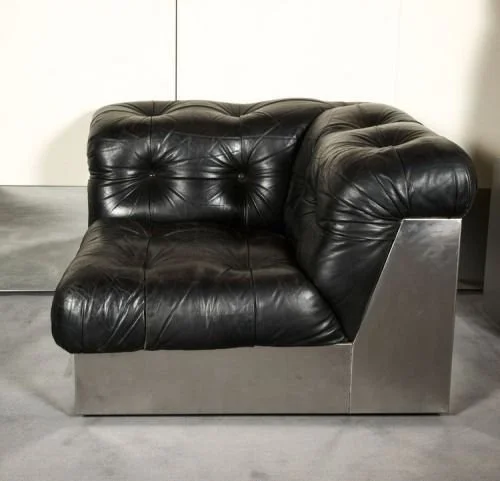Featured: Brutalist Furniture
Brutalist design is an architectural and artistic movement that emerged in the mid-20th century, characterized by its stark, rugged aesthetic and the use of raw materials. The term "Brutalism" comes from the French word "béton brut," meaning "raw concrete," which reflects the movement's emphasis on materials in their natural state.
Key features of brutalist design include:
Massive Forms: Brutalist structures often feature bold, geometric shapes that evoke a sense of monumentality. These forms can appear heavy and imposing, with a focus on horizontal and vertical lines.
Exposed Materials: The use of unfinished or rough materials, particularly concrete, is a hallmark of the style. This exposure highlights the textures and inherent imperfections of the materials, creating a visceral connection between the structure and its surroundings.
Functional Aesthetics: Brutalist architecture prioritizes utility over ornamentation. The design often reflects its purpose, with minimal decorative elements, making the functionality of the building apparent.
Integration with Environment: Many brutalist buildings are designed to harmonize with their surroundings, emphasizing the relationship between the structure and its context. This can include the use of terrain and landscape to enhance the design.
Social Context: Emerging after World War II, brutalism was often associated with government buildings, universities, and social housing projects. The style was seen as an embodiment of social idealism, aimed at addressing collective needs through straightforward, practical design.
While critics often argue that brutalist architecture can appear cold or uninviting, supporters appreciate its honesty and strength. The movement continues to influence contemporary architecture, with many modern designers drawing inspiration from its principles.
Our Curated Brutalist Finds
Brutalist furniture by American designer Adrian Pearsall for Craft Associates Inc
Giorgio Montani for Souplina, 1970
Heavy Brutalist Wabisabi Oak Double Daybed, 1970s
DISCLAIMER: THE MILLIE VINTAGE DOES NOT OWN ANY RIGHTS TO THESE PHOTOS. PLEASE NOTE THAT ALL IMAGES AND COPYRIGHT BELONGS TO THE ORIGINAL OWNERS. NO COPYRIGHT INFRINGEMENT INTENDED.























